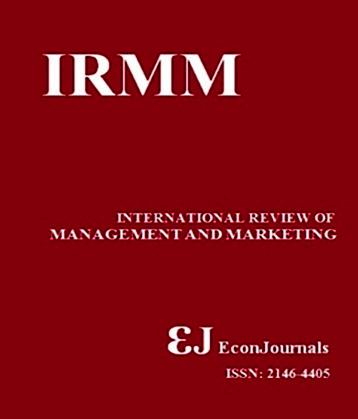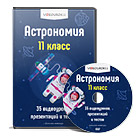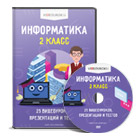 International Review of Management and
International Review of Management and
M
 arketing
arketing
ISSN: 2146-4405
available at http: www.econjournals.com
International Review of Management and Marketing, 2016, 6(S2) 166-171.
Special Issue for "Management of Education: Problems and Perspectives"

The Mechanism of Industrial Educational Clusters Creation as Managerial Entities of Vocational Education
Alexander N. Lunev1*, Rais S. Safin2, Evgeny A. Korchagin3, Damir K. Sharafutdinov4, Tatyana V. Suchkova5, Lubov V. Kurzaeva6, Svetlana R. Nikishina7, Natalia A. Kuznetsova8
1Kazan National Research Technical University named after A. N. Tupolev – KAI, Kazan, Russia, 2Kazan State University of Architecture and Engineering, Kazan, Russia, 3Kazan State University of Architecture and Engineering, Kazan, Russia, 4Kazan State University of Architecture and Engineering, Kazan, Russia, 5Kazan State University of Architecture and Engineering, Kazan, Russia, 6Magnitogorsk State Technical University, Magnitogorsk, Russia, 7Kazan (Volga Region) Federal University, Kazan, Russia, 8Academy for Advanced Studies and Retraining of Educators, Moscow, Russia. *Email: [email protected]
ABSTRACT
The relevance of the paper is conditioned by the increasing role of vocational education in the regional economy. In modern conditions vocational education is regarded as a system of integrative interaction of education, science and industry, aimed at the development of a specialist ready for the life-long learning, capable to a certain type of professional activities, self-organization and competitiveness on the labor market. The aim of the paper is to develop the mechanism of branch educational clusters’ creation as the entities of vocational education’s management. The leading method is the method of action research, allowing to obtain new knowledge about vocational education’s management and to propose mechanisms for its optimization to obtain qualitatively new results of vocational training process. The article defines the essence of an industrial educational cluster as a set of vocational educational institutions, united by industrial features and partnerships with industrial enterprises; presents the mechanisms of interaction between labor market and vocational education; describes the mechanism of educational clusters’ formation on the basis of vertical integration of educational institutions; reveals the mechanism of industrial educational clusters’ formation on the basis of social partnership of the manufacture and vocational educational institutions. The paper submissions can be useful for scientific and pedagogical staff of vocational educational system, specialists of educational managerial bodies and regional authorities.
Keywords: Management of Vocational Education, Educational Cluster, Social Partnership, Industry
JEL Classifications: I21, I25, I28
INTRODUCTION
The Relevance of the Study
Today, vocational education is positioned as one of the most important factors for sustainable development of society, competitiveness and national security of the state. This is due to the formation of a new geopolitical environment, the restructuring of industrial sectors and the social sphere, the development of regionalization. In modern conditions the vocational education is considered as a system wholeness of integrative interaction of education, science and manufacture, aimed at the development of a specialist ready for the life-long learning, capable to a certain type of professional activities, self-organization and

competitiveness on the labor market (Kalimullin and Masalimova, 2016; Zaitseva, 2013; Dmitrieva et al., 2015; Sabirov et al., 2015). However, due to the insufficiency and sometimes the lack of links with the industrial sector, vocational education cannot prepare specialists of a new quality type: Enthusiastic, competent, adaptable to changes and quickly mastering new techniques and technology of modern high- tech manufacture, capable to analyze complex situations and make responsible decisions, skilled in new information technologies. This leads to a decrease in the quality of vocational education, investment activity in education, the growth of the deficit of demand professionals (Lunev et al., 2014). One of the ways to solve the problem is the creation of industrial educational clusters. It is established that
| 166 |
|
|
| International Review of Management and Marketing | Vol 6 • Special Issue (S2) • 2016 |
|
|
|
|
|
|
|









Lunev, et al.: The Mechanism of Industrial Educational Clusters Creation as Managerial Entities of Vocational Education
in the conditions of society’s transformation, industrial logic of socio-economic development’s management is ineffective. The industry is becoming a virtual concept and there is neither object nor actor in its development. Clusters provide an opportunity to develop not by inertia (Dranev, 2001). The paper aims to discover peculiarities of the industrial educational cluster as the entity of vocational education’s management.
1.2. The Essence of Cluster
Under the cluster usually is understood a group of objects allocated on the criterion of their proximity to each other. According to the theory of Porter, a cluster is a group of geographically neighboring, interconnected companies (suppliers, manufacturers, etc.) and related to them organizations (educational institutions, bodies of state administration, infrastructure companies) operating in a particular area, and complementary to each other. Michael Porter believes that the country’s competitiveness should be considered through the prism of international competitiveness not of its individual companies but clusters -Associations of firms in different industries. In this case, a fundamental importance belongs to the ability of clusters effectively to use the internal resources (Porter, 1993).
In Russia the term “cluster” is one of the most popular. However, there is no a unified approach to this concept’s consideration. The most popular points of view are: (1) Dranev (2001) assumes that cluster is a network of suppliers, manufacturers, consumers, elements of industrial infrastructure, research institutes, interrelated in surplus value’s creating process; (2) Tretyak notes that it is important to distinguish clusters and enterprise networks. Tretyak (2006) writes that the term “Network” refers to the group of medium firms, which interact to achieve common goals - complementing each other and specializing in order to overcome common problems, achieve collective efficiency and conquer new markets; the term “cluster” refers to sector and geographical concentration of enterprises which produce and sell a range of related or complementary goods with joint efforts;
(3) Migranyan (2004), emphasizes that cluster is a concentration of the most effective and interrelated economic activities, i.e., a set of interrelated groups successfully competing firms that form the “Golden section” and provide a competitive position in the industry, national and international markets; (4) Tzikhan (2003) assumes that cluster is a community of firms, closely related industrial branches which mutually promote to the growth of competitiveness of each other.
It is found that variant approaches to the concept “cluster” are conditioned by the fact that the authors differently determine the entities of the cluster. In our opinion, the entities of cluster can be as companies (suppliers, manufacturers, etc.), so related to them organizations (educational institutions, bodies of state administration, infrastructural companies). Accordingly, cluster is proposed to be defined as a group of interconnected companies and associated institutions functioning in a particular field, linked by commonality of needs and the ability to use internal resources effectively. It is established that cluster is an integrative mechanism, which provides for intensive development of its constituent organizations, their social partnership.

1.3. The Mechanisms for the Industrial Clusters’ Creation
It is found that the creation of industrial clusters is possible through the use of system-forming transformational mechanisms or based on the synergistic effect of horizontal and vertical linkages between organizations.
It is found that the system-forming transformational mechanisms are the integration strategies, based on the combination of socio-economic systems or the formation of sustainable relationships between them. Transformation as a form of organizational-economic conversion of firms, in which the composition of the legal entities involved in transformation is changed, is an integral part of the dynamics of organizations’ development in the external environment. It is found that the major types of transformation are merger, accession, division, separation and transformation.
Merger can be defined as the procedure of transition from one organization under the control of another one, by acquiring absolute or partial ownership right on the merger’s organization. Merger and takeover are a procedure for ownership’s changing or the company’s ownership structure changing, being the final link in the system of measures for its restructuring. The purpose of mergers and takeovers is to increase the wealth of shareholders and to achieve competitive advantage in the market. Mergers and takeovers are one of the main methods for the implementation of the transformational strategies.
It is established that if a corporation holds a prominent position in the market and the industry, has good prospects for development, but needs to strengthen its position to achieve competitive advantages in the industry, through mergers and takeovers, it can reach its goal by uniting or acquiring companies of the same segment in the market. Often corporations can carry out mergers and takeovers of firms in other segments of the market to reduce the risk of its activities, expanding of its presence sphere. If the corporation revises its positions in the market, finds new priorities, identifies the main areas of activities, getting rid of not the main problematic areas, lacks in finances, it can effectively use the mechanism of mergers and takeovers to sale or separate individual divisions and subsidiaries.
It is clarified that the foundation of cluster formation is not based on property relations but market relations of being “profitable” of more “dense” integrated interaction based on the formation of relationships between the different elements of organizations. The nature of these ties is directly linked to aspects of organization’s development. Changes of ownership relations can take place and form both positive and negative aspects with the relationship of being “profitable.” For example, when merged small company provider by largest company, the stimulating role of competition is lost and such enterprise often expects from the new owner some initiatives, shifting many issues “in the competence center.” During the formation of a cluster small companies are always in a position of dependence on the efforts for their development. Development for them means life, the stopping of one of them - stagnation and replacement with a more progressive growing company (Lunev et al., 2013). Another positive aspect of these relationships is the
|
|
| 167 |
|
|
| International Review of Management and Marketing | Vol 6 • Special Issue (S2) • 2016 |
|
|
|
|
|
|









Lunev, et al.: The Mechanism of Industrial Educational Clusters Creation as Managerial Entities of Vocational Education
“Central” corporation’s awareness of that objectively existing fact that it is necessary to develop the local environment, which cannot always be able to fund serious research in relevant fields.
It is found that the relationship of the invariant properties of objects belonging to different structural levels of being, leads to a synergistic effect. It is established that the basic conditions of system’s self-organization and self-development, from the point of view of synergetic, are: The availability of fluctuating elements; openness, which ensures a constant influx of energy; strengthening of the deviations from the unstable states and exceeding by them of certain critical values; non-linearity of describing the system controls; the cooperative behavior of system’s elements. The possibility of these conditions applying to the study of the mechanisms of clusters’ formation is confirmed by the fact that the latter ones are “open systems” in the form of non-profit partnership. In the course of interaction between organizations horizontal and vertical linkages are formed that can produce synergetic effect and contribute to transaction costs’ decreasing.
It is found that organizations - Competitors are forced to provide a supportive effect on each other, being linked by economic relations. That is, at the same time existing in a competitive environment, the organizations, in contrary to the rules of competition, “help” each other to develop. Vertical integration based on the innovative interaction of a specific organization with a strong innovative and technological capacity with a number of its suppliers and competitors, contributes to the development of smaller organizations of suppliers and consumers. The territorial proximity of cluster’s entities allows reduce the costs of “maintenance” of linkages outlined above, which the cluster has in a broad sense and specifically the organizations that make it up. Over time, effectively acting clusters become a reason for major investments and careful attention of the government, i.e., the cluster becomes something more than the sum of its individual parts. The cluster center most often is one or a few powerful companies, with competitive relationship between them. This distinguishes cluster from a cartel or financial group. The concentration of rivals, their customers and suppliers contributes to the growth of efficient specialization of production. Besides, the cluster provides employment and for many small firms, and small businesses. In addition, the cluster form of organization leads to the creation of a special form of innovation – “of aggregate innovative product.” Amalgamation into the cluster on the basis of vertical integration forms not a spontaneous concentration of various scientific and technological inventions, but a particular system of dissemination of new knowledge and technology (Tzikhan, 2003).
1.4. The Essence of an Industrial Educational Cluster
Industrial educational cluster is a set of interrelated institutions of vocational education, combined by industrial feature and partnerships relations with industrial enterprises. The important distinguishing features of an industrial educational cluster are, first, the creation of conditions for the formation of professionals with different levels of vocational education, secondly, the raising of highly skilled occupations’ prestige, third, the integration of education with science and manufacture.

MATERIALS AND METHODS
Methods of the Study
During research the following methods were used: Analysis of normative documents, the action research method, expert evaluation method, observation and questionnaire.
2.2. Experimental Base of the Study
Experimental work was conducted on the basis of industrial educational clusters in mechanical engineering (supervised by the Ministry of Economy and Industry) and construction industry (supervised by the Ministry of Construction) of the Republic of Tatarstan in Russia. In the experimental work participated 108 heads of institutions of vocational education, 210 specialists of education authorities, 67 specialists of the regional authorities, 58 employees of the industrial ministries and 376 employers.
2.3. The Stages of the Study
The study was conducted in three stages:
The first stage is devoted to the analysis of modern state of the studied problem in scientific literature and practice of education’s management; to the development of the research program;
The second stage defines the essence of an industrial educational cluster; reveals the mechanisms of interaction between labor market and vocational education; describes the mechanism of educational clusters’ formation and reveals the mechanism of industrial educational clusters’ formation; represents the experimental work to verify the efficiency of the mechanism of industrial educational clusters’ formation;
The third stage involves the systematization, interpretation and synthesis of the research results; refines theoretical conclusions; processes and represents the obtained results.
3. RESULTS
The main results of this study are: (1) The mechanisms of interaction of labor market and vocational education; (2) the mechanism of educational clusters’ formation on the basis of educational institutions’ vertical integration; (3) the mechanism of industrial educational clusters’ formation on the basis of social partnership of the manufacture and vocational educational institutions.
3.1. Mechanisms of Interaction between Labor Market and Vocational Education
It is found out, that formation of industrial educational clusters is the basis for diversification of socio-economic development of the territory, and also provides a quick response of professional educational institutions on the problems of the labor market (Table 1).
3.2. The Mechanism of Educational Clusters’ Formation on the Basis of Vertical Integration of Educational Institutions
The mechanism of educational clusters’ formation on the basis of vertical integration of educational institutions provides for the integration of educational institutions: From pre-school educational
| 168 |
|
|
| International Review of Management and Marketing | Vol 6 • Special Issue (S2) • 2016 |
|
|
|
|
|
|
|









Lunev, et al.: The Mechanism of Industrial Educational Clusters Creation as Managerial Entities of Vocational Education
Table 1: The interaction of vocational educational institutions with the labor market

especially in high-tech and innovation fields; (3) shortening the workers’ training; (4) social security of educational institutions’
Core issues of labor market
The imbalance of supply and
demand in the labor market Low competitiveness on the labor
market of certain categories of citizens (persons who need social
protection)
Insufficient adaptability of the educational system to labor market requirements, especially in
terms of the demand’s prospects The lack of specialists in the
sphere of innovative development
The difficulty of information
obtaining about the labor market Insufficient on-farm horizontal mobility, the growth of functional unemployment

The reaction of professional educational institutions
Retraining
The development of flexible, employment-oriented training system for unemployed
citizens
Advance training of redundant workers for new areas of employment
Innovative vocational training curricula of additional
professional education The establishment of centers
for career planning Improving of the system of intra-company and corporate training
graduates, raising of the working professions’ prestige; (5) ensuring of the access to higher education for orphans, children from poor and problematic families, rural students; (6) the development of educational and material base of educational institutions in accordance with modern technologies of manufacture; (7) attracting of investments in vocational education and training; (8) the creation of organizational structures on scientific and methodological support of vocational education’s development in the region;
(9) the mechanism’s formation of Federal-regional management of vocational educational system and the division of powers in the field of education’s management between Federal Industrial Ministries, the Ministry of Education in the Federation and Regional Educational Authorities; (10) creating of the conditions for productive interaction between enterprises and educational institutions on organization and management of educational process, built on a modern technological base; (11) the mechanisms’ formation for the integration of manufacture and education.
It is established that the mechanism for industrial educational clusters’ formation on the basis of social partnership of the
institutions and ending with the centers of retraining and advanced training. It is found that the mechanism of educational clusters’ formation on the basis of vertical integration of educational institutions is based on the theory of continuing education. Continuing education is one of the necessary conditions of human life activities, its integration into national and global community. In continuing education the idea is embodied that the person should be in the center of all educational endeavors for whom, optimal conditions for the full development of abilities and realization of labor potential throughout life must be created. In our opinion, the social role of continuing learning is that it is a factor for the approving of subjectivity of a person in his or her socialization and professionalization, building of a life educational strategy. In the theory of continuous education the idea of learning “through life” is transformed. Continuing education should be understood not as a continuous process of assimilation of new knowledge but continuous change in abilities to assimilate quality new and more complex knowledge. Therefore, continuing education can be considered as a factor of competitiveness of a specialist in the labor market. It is established that advantages of the mechanism of educational clusters’ formation on the basis of vertical integration of educational institutions are the following: (1) Continuing education is seen as a single system; (2) the trainees, as entities of pedagogical process are focused on the education throughout life; (3) integration and the internationalization of knowledge, enhancing of communication, using of information technology are provided; (4) multi-level system of education is developed.
3.3. The Mechanism of Industrial Educational Clusters’ Formation on the Basis of Social Partnership of the Manufacture and Vocational Education
It is found that the mechanism of industrial educational clusters’ formation on the basis of social partnership of the manufacture and vocational education institutions is aimed at solving of the following problems: (1) Coherence of labor market and educational services market; (2) the elimination of skilled workers’ deficit,

manufacture and vocational educational institutions includes the following tools: (1) Multi-level and multi-stage nature of education; (2) Rational occupation of professional niches in the labor market, the transition to contractual forms of employment “graduate - employer – institution of vocational education” by organizing “fair of graduates,” contract agreements, educational loans; (3) the continuity of general and professional educational curricula; (4) expansion of students’ and teachers’ mobility in their interests’ realization; (5) taking into account of each participant’s interest in the labor market, his right to free choice with regard to the peculiarities of their businesses and strategic plans; (6) the selection of training occupations with a strong focus on the needs of the labor market, i.e. performance of the state order to ensure effective use of budget for vocational education; (7) the introduction, in addition to per capita norms of the financing order norms, providing economic incentives and effective implementation, particularly graduates’ employment in the acquired professions.
3.4. Realization Stages of the Mechanism of Industrial Educational Clusters’ Formation
Implementation of the mechanism’s efficiency for industrial educational clusters’ formation assumed the following experimental stages: Ascertaining, forming and control.
3.4.1. The ascertaining stage
The purpose of ascertaining stage was to identify the attitude of scientific and pedagogical staff of the professional educational system, specialists of educational management bodies and regional authorities, staff of line ministries, employers to the formation of industrial educational clusters. At this stage, from the number of heads of professional education institutions, specialists of education authorities, staff of line ministries and employers target groups were created to implement the mechanism of industrial educational clusters’ formation. The target groups developed special curricula that included activities and timelines.
|
|
| 169 |
|
|
| International Review of Management and Marketing | Vol 6 • Special Issue (S2) • 2016 |
|
|
|
|
|
|









Lunev, et al.: The Mechanism of Industrial Educational Clusters Creation as Managerial Entities of Vocational Education
3.4.2. The forming stage
In the framework of the formative stage industrial educational clusters were created in mechanical engineering (supervised by the Ministry of Economy and Industry) and construction industry (supervised by the Ministry of Construction). An agreement on public - corporate partnership in the field of training of qualified personnel as part of the industrial educational clusters between the supervising (industrial) Ministry, the Ministry of Education and Science of the region, major enterprises, institutions of vocational education was developed and adopted. The algorithm to form state-corporate order for staff training was defined:
(1) The institution of vocational education concludes contracts on vocational training with the enterprises; (2) on the basis of contracts with companies the vocational educational institution concludes contracts on vocational training with the consumers of educational services; (3) companies apply to the line ministry, supported by agreements with institutions of vocational education;
(4) industrial ministry creates an order and submits a request to the Ministry of Education and Science of the region; (5) The Ministry of Education and Science of the region forms regional order and submits a request to the government of the region; (6) the regional government approves the order and sends the relevant documents to the Ministry of Education and Science of the region; (7) The Ministry of Education and Science of the region gives the order (a number of trainees) to institutions of vocational education;
(8) the institution of vocational education on the basis of the received key figures concludes contracts on vocational training with the enterprises and the consumers of educational services.
3.4.3. The control stage
In the control stage the conditions for creation of industrial educational clusters were revealed:
Formation of cluster policy in vocational education, including:
The state support of cluster initiatives at the stage of formation and development of clusters; (2) active use of the state and corporate order as a tool for development of educational industrial cluster; (3) organization of multi-level vocational education on the harmonized training curricula;
improvement of regional normative-legal basis in the sphere of vocational education; (5) creation of innovative infrastructure of vocational education; (6) ensuring of the interaction between educational institutions of the region to
improve the quality of vocational education;
Formation of regional system of continuing vocational education, providing: (1) Creating of vocational environment which is appropriate to the abilities, needs and possibilities of the person; (2) the multi-stage nature of vocational education, in the form of a set of directions with the educational curricula that have different deadlines of education; continuity of educational curricula of different levels; (3) the distribution of functions between educational institutions, enterprises and organizations included in industrial educational cluster;
the creation of services to support the continuing professional education’s process such as adaptive, diagnostic, didactic, psychological centers; (5) optimal professional and qualification structure of high school graduates (bachelors, masters) based on the classification of training areas; (6) the introduction of postgraduate studies, differentiated by duration

of training for graduates who mastered educational curricula of higher schools of different durations; (7) improvement of the compatibility of national educational systems through the improvement of recognition procedures of degrees and periods of study, development of common definitions of qualifications, taking into account the volume of academic load, level and results of educational process, competencies and profile of educational curricula; (8) ensuring of rational combination of academic quality and applied nature of educational curricula.
4. DISCUSSIONS
Important theoretical and practical significance for the study has the work of Porter (1993), in which competitive opportunities are analyzed of more than 100 industries in 10 countries. It turned out that the most competitive multinational companies usually are not haphazardly scattered in different countries, and have tendency to concentrate in one country, and sometimes even in the same region of the country. This is due to the fact that one or several firms, reaching competitiveness in the world market, extend their positive impact on the nearest environment: suppliers, consumers and competitors. And success of the environment, in turn have an impact on further growth of competitiveness of the company. In the end, a “cluster” is formed -A community of firms, closely related industries which mutually promote to the growth of competitiveness of each other. After the first one often new clusters are formed and international competitiveness of the country as a whole is increased. Works of Dranev (2001), Migranyan (2004), Tretyak (2006), Tzikhan (2003) are also interesting in which ways of creation and effective functioning of industrial clusters are considered. However, the problem of creation and functioning of educational clusters has a discussion nature. In special literature the questions about the essence of industrial educational clusters and the mechanisms of their creation are not solved.
5. CONCLUSION AND RECOMMENDATIONS
It is found that the mechanism of creation of industrial educational clusters as the entities of management of vocational education provides: (1) The development of all entities of a cluster, stimulating the implementation of new strategies; (2) free exchange of information and rapid diffusion of innovations; (3) the emergence of new forms of competition and the development of absolutely new possibilities; (4) the formation of a substantially continuing system of education.
The paper submissions can be useful for scientific and pedagogical staff of the system of vocational education, specialists of education’s management bodies and regional authorities.
Taking into account the obtained results of this study a number of research challenges and promising directions that require further consideration can be allocated: Regulatory support of management of industrial educational cluster; comparative analysis of forms and methods of management of educational cluster and industrial educational cluster.
| 170 |
|
|
| International Review of Management and Marketing | Vol 6 • Special Issue (S2) • 2016 |
|
|
|
|
|
|
|









Lunev, et al.: The Mechanism of Industrial Educational Clusters Creation as Managerial Entities of Vocational Education
It is found that the efficiency of the mechanism to form industrial educational clusters will increase with the development of network cooperation with regional labor markets (the mechanism of the relationship between employer needing labor power, and worker, i.e. a potential employee, offering its labor power in a given time) and labor force (as a community of individuals who wish to acquire a profession, to change the profile of activities or to improve their skills) that define the structure of demand for educational services.
REFERENCES
Dmitrieva, N.V., Zaitseva, N.A., Kulyamina, O.S., Larionova, A.A., Surova, S.A. (2015), Scientific and theoretical aspects of the staff recruitment organization within the concept of talent management. Asian Social Science, 11(3), 358-365.
Dranev, Y.N. (2001), Practice of Economic Development of Trajectories: The Experience of the EU and Russia. Moscow: Scanrus. p144.
Kalimullin, A.M., Masalimova, A.R. (2016), Editorial: Actual issues of national education: Theory and practice. Mathematics Education, 11(1), 1-2.
Lunev, A.N., Pugacheva, N.B., Stukolova, L.Z. (2013), The essential

characteristic of the regional services market. Concept, 12, 96-100. Lunev, A.N., Pugacheva, N.B., Stukolova, L.Z. (2014), Forms of integration of entities of the regional market of vocational education
services. Concept, 1, 61-65.
Migranyan, A.A. (2004), Theoretical Aspects of Formation of Competitive Clusters in Countries with Economies in Transition. Moscow: Science. p258.
Porter, M. (1993), The international competition. The Competitive Advantages of Countries. Moscow: International Relations. p896.
Sabirov, I.T., Ponkratova, L.A., Gracheva, N.A., Kiselev, S.V., Fatikhova, L.E., Chudnovskiy, A.D. (2015), The formation and development trends of the consulting market in Russia. Mediterranean Journal of Social Sciences, 6(2S3), 188-195.
Tretyak, V.P. (2006), Clusters of enterprises: Ways of creation and effective functioning. Available from: http://www.subcontract.ru/ Docum/DocumShow_DocumID_133.html.
Tzikhan, T.V. (2003), Cluster theory of economic development. Theory and Practice of Management, 5, 40-51.
Zaitseva, N.A. (2013), The role of education system in adaptation of graduates from Russian institutes and colleges at European enterprises (by example of service companies). Middle East Journal of Scientific Research, 13(5), 693-697.
|
|
| 171 |
|
|
| International Review of Management and Marketing | Vol 6 • Special Issue (S2) • 2016 |
|
|
|
|
|
|














 International Review of Management and
International Review of Management and
 arketing
arketing



























